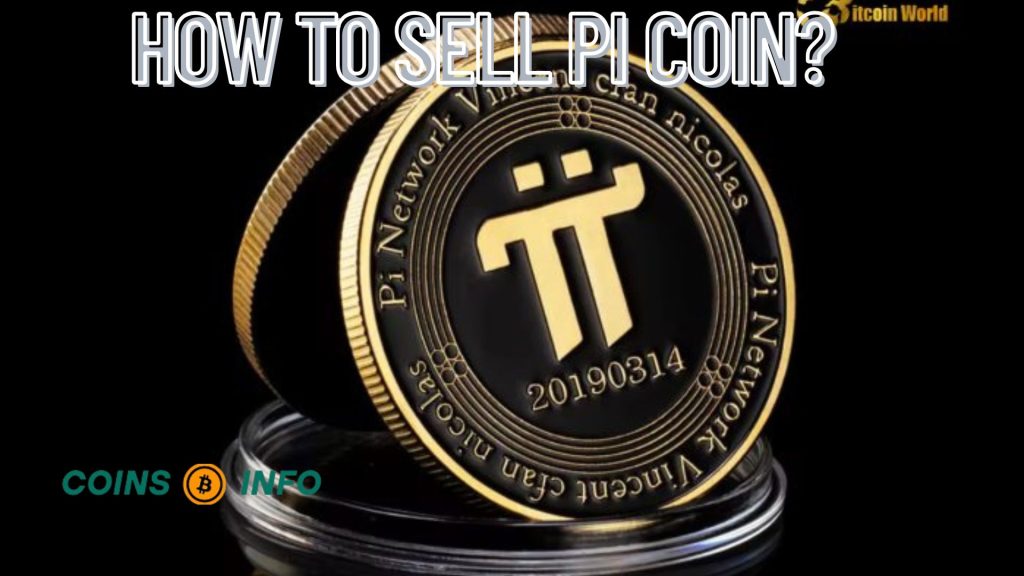How to sell Pi coin: A group of Stanford grads founded Pi Network in 2019 to create a decentralized digital currency that would require less energy to mine on smartphones. The project’s accessibility and mobile-first approach immediately attracted attention. Through the smartphone app, millions of people signed up and started mining Pi Coin. Nonetheless, consumers continue to ask the same question: how can Pi Coin be sold?
Pi’s liquidity and market presence are impacted by its ongoing shift from the testnet phase to full mainnet deployment as of mid-2025. A comprehensive guide to understanding the steps and challenges involved in selling Pi Coin can be found below.
Understand the Current Status of Pi Coin.
Before attempting to sell Pi Coin, it’s crucial to understand its development status:
- Testnet vs Mainnet: Initially, Pi Network ran on a testnet where coins had no real-world value. In late 2021, the project announced the “Enclosed Mainnet” phase, during which coins were transferred to the mainnet but were not yet tradable on open exchanges.
- KYC (Know Your Customer): Only users who completed the KYC verification were eligible to transfer mined coins to the mainnet wallet. Without KYC, you can’t move or sell your Pi.
Pi Network is now still in the semi-enclosed mainnet stage. Pi is not yet fully listed on well-known cryptocurrency exchanges like Binance or Coinbase, despite the fact that some peer-to-peer (P2P) trades do take place, and a few unofficial sites have tried listings.
Complete KYC Verification.
Selling Pi is impossible unless your account has passed KYC. Here’s how to complete it:
- Open the Pi Network app.
- Go to the “Mainnet Checklist”.
- Tap on “KYC Verification” and follow the steps, which usually involve uploading a government-issued ID and taking a selfie.
Set Up Your Pi Wallet.
To sell Pi, you’ll need access to your Pi Wallet:
- In the Pi app, navigate to the Mainnet section and start your wallet.
- Secure your 24-word passphrase and store it safely.
- Once your coins are migrated, they will appear in your wallet as “Available Balance.”
Without this step, your Pi remains locked and inaccessible.
Understand Pi’s Trading Restrictions.
Pi Network has explicitly stated that Pi is not yet tradable on external exchanges. This is because:
- The core team wants to prevent price manipulation.
- The network is still in the bootstrapping phase, encouraging users to build the Pi ecosystem by using it in marketplaces, not just selling it.
Despite this, some individuals have engaged in unofficial P2P trading. This includes:
- Selling Pi for fiat or other cryptocurrencies via social media groups, Discord media, or Telegram.
- Using barter systems where Pi is exchanged for goods or services.
Use Pi Apps and Marketplaces.
Rather than selling, many early adopters are using Pi to purchase goods and services within Pi-powered apps or local marketplaces. These include:
- Pi Browser: A separate app where various decentralized applications (dApps) built on Pi’s blockchain exist.
- Pi Mall / PiChain Mall: Community-driven platforms where goods can be bought using Pi.
- Local barter groups: In many countries, Pi holders have created physical and digital spaces to trade items for Pi.
While this isn’t “selling” in the traditional sense, it’s a way to exchange Pi for real-world value.
Anticipate Official Exchange Listings.
Major cryptocurrency exchanges will be the best place to sell Pi in the long run. As the ecosystem develops and satisfies regulatory requirements, the Pi Core Team has hinted that Pi would be listed on exchanges such as Binance, KuCoin, or OKX.
Things to prepare in advance:
- Create an account on a crypto exchange that might list Pi in the future.
- Learn how to combine your Pi Wallet with an exchange wallet.
- Be cautious of fake exchanges or token listings claiming to trade Pi—many are scams.
When Pi is officially listed, you’ll be able to:
- Send your Pi from your mainnet wallet to the exchange.
- Trade Pi for USDT, BTC, ETH, or fiat currencies.
- Withdraw your accounts to a bank account or digital wallet.
Conclusion.
Due to the network’s early stages of development and the absence of official exchange listings, Pi Coin sales are currently restricted. However, Pi is heading toward greater utility and eventually market liquidity with the KYC procedure, mainnet wallet deployment, and developing ecosystem. Users might investigate peer-to-peer trading and community marketplaces in the interim, being cautious and keeping abreast of official developments.
Selling Pi will soon be easier and safer if the core team is able to make the switch to an open mainnet and get listings on reliable exchanges. Patience and informed involvement are essential until then.
